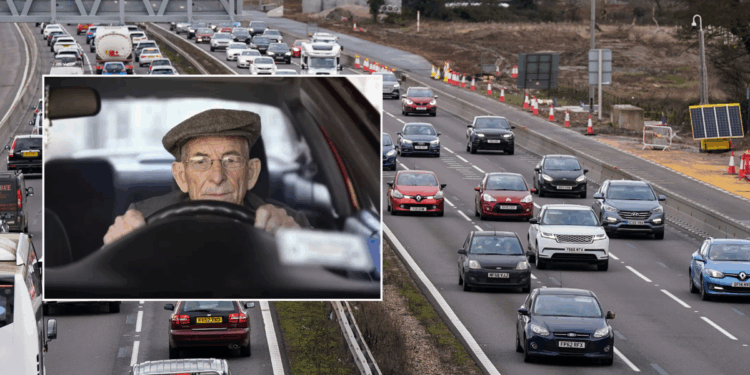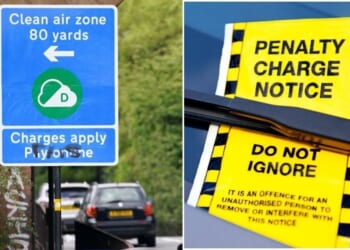Elderly drivers in Northern Ireland could soon face tighter driving restrictions after new research revealed a sharp increase in serious and fatal road incidents involving motorists over the age of 70.
The report, commissioned by the Department for Infrastructure’s Promotion and Outreach Branch, forms part of the Northern Ireland Road Safety Strategy’s annual review.
It analysed data from the Police Service of Northern Ireland, covering the five years between 2020 and the end of 2024, to identify trends in road collisions involving older drivers across all council areas.
According to the study, 225 drivers aged 70 and above were killed or seriously injured during this period, sparking calls as to whether tougher restrictions should be introduced.
This group made up 13 per cent of all motorists who died or suffered severe harm, even though they represent a smaller share of total drivers.
In total, there were 1,720 motorists who were either killed or seriously injured on Northern Ireland’s roads between 2020 and 2024, highlighting the significant contribution of elderly drivers to these figures.
The data showed that older drivers are increasingly at risk on the road.
Over the same five-year period, elderly motorists were found to be responsible for 376 collisions that resulted in fatal or serious injuries.
This represents just over one in 10 of all such incidents recorded for drivers of all ages.
Perhaps most concerning is the higher level of danger older motorists face once they are involved in a crash.

The department found that 225 drivers aged 70 and above were killed or seriously injured during the period
|
PA/GETTYThe report found that drivers over 70 are “twice as likely” to die or be seriously hurt in an accident compared to younger motorists.
A further 16 per cent of collisions involving elderly drivers led to death or serious injury, compared with eight per cent for those under 70.
In most cases, older drivers were found to be at fault for their own severe injuries. They were responsible in 69 per cent of cases, significantly higher than the 53 per cent recorded among younger drivers.
This suggests that age-related factors — such as slower reaction times, reduced vision, or health conditions — may play a major role in these accidents.

The report showed increasing concern over elderly drivers throughout Northern Ireland
|
GETTY
Health issues were a clear factor in many incidents.
The report revealed that physical or mental health problems contributed to 10 per cent of serious collisions involving elderly drivers, compared to just two per cent among younger age groups.
This finding points to the growing importance of medical fitness in determining driving ability among older people, a measure which is currently under review by the UK Government.
The timing of accidents also varied between age groups. Most serious incidents involving elderly motorists happened in the afternoon — 61 per cent of cases — while only 36 per cent of younger driver incidents occurred during those hours.
Interestingly, Sundays were relatively safer for older motorists, with only nine per cent of their serious crashes happening that day, compared with 16 per cent for younger drivers.

The report found that 1,720 motorists were either killed or seriously injured between 2020 and 2024
|
PAGeography also played a role. Mid Ulster recorded the highest rate of elderly driver casualties, with 31.3 serious or fatal incidents per 100,000 residents aged over 70. In contrast, Belfast saw the lowest rate, with just 6.0 per 100,000.
The Department for Infrastructure explained that it will use these findings to help shape future road safety policies and may consider new measures to protect both elderly drivers and other road users.
Officials will review the evidence to decide whether changes such as medical testing, driving assessments, or restricted licences for older motorists are necessary.
This detailed analysis provides a clearer understanding of the challenges facing older drivers and highlights where improvements in road safety can be made.
The full report, part of a wider series of studies on road safety trends, is available through the Department’s statistics portal for those wishing to explore the data further.
















